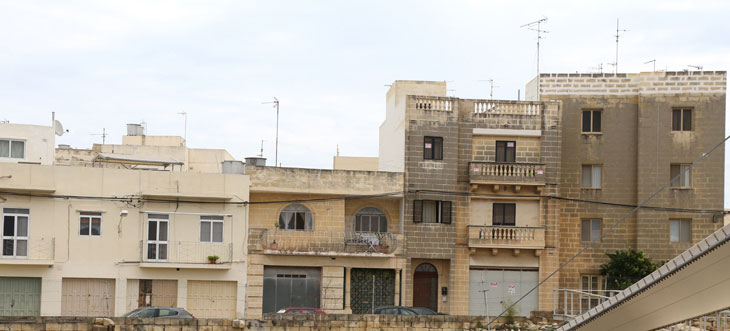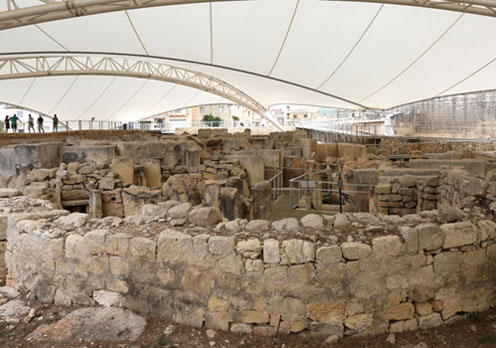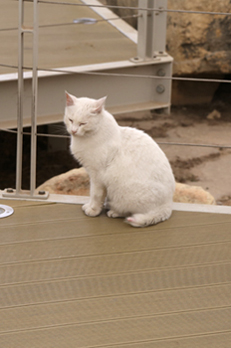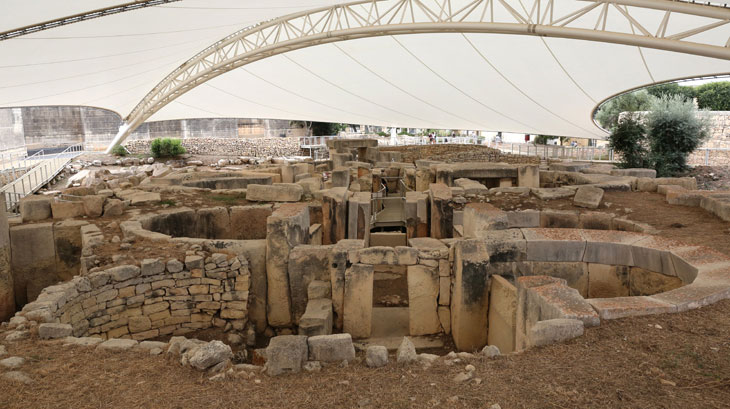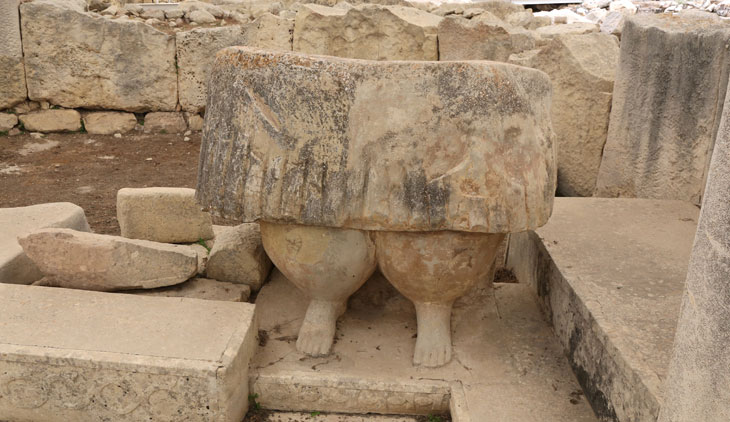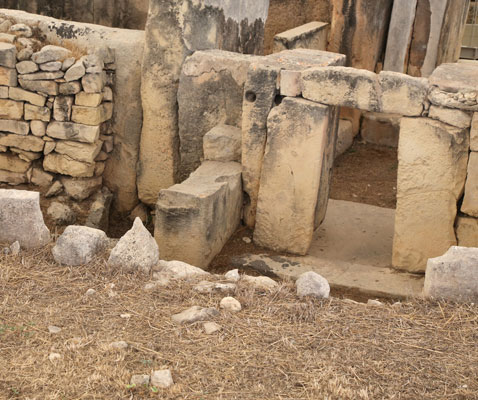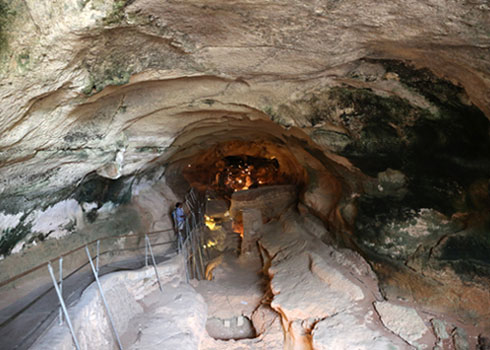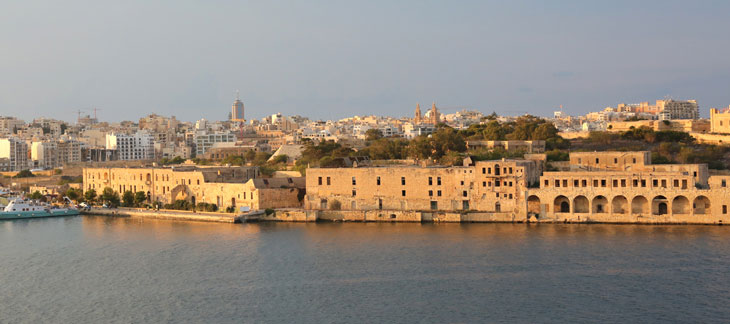Day 6 - Tarxien Temples and Gar Dalam Cave and Museum
Everytime we passed the little square at the top of the hill on our way to Valletta we were approached by someone
trying to sell us a pass to the Hop On Hop Off Bus. The route included stops at the Tarxien Temples
which we wanted to see, the Blue Grotto which sounded scenic, and Gar Dalam Cave and the Malta Falconry Center which
sounded interesting. Buses purportedly ran every 30 minutes.
It sounded like a good option for our last day on Malta so we innocently bought our passes and boarded a rather
uncomfortable, noisy old bus that was heading to those attractions. After 15 minutes or so, we were deposited with
several other tourists in a sort of shopping area. When we asked which direction we should go to get to the temples,
the driver waved vaguely and mumbled something about 2 blocks so we all headed gamely in that direction.
There were no signs pointing to the temples so we walked and walked and occasionally we asked someone for directions. The
locals kept waving us on so we walked some more.
Eventually we came to a little park. The other tourists went straight, but we had lost faith and paused to consider
our options. An old woman who was feeding stray cats stared at us for awhile. Then, without saying a word, she pointed
down the street to our left. We took her advice, and after a couple more blocks, we arrived at the temples. I sometimes
wonder where the other tourists ended up. We never saw them again.
Unlike Hagar Qim and Mnajdra which are out in the country, the Tarxien Temples are surrounded by buildings.
The site consists of four linked structures built between 3600 and 2500 BC. Several stray cats seem to call the temples home.
Stones decorated with spirals and animals and a partial statue like the one in the picture below were found in the temple. The
originals have all been moved to the safety of the National Museum of Archaeology and replaced by replicas.
In 1914, when the Tarxien Temples were discovered, the area was a farmer's field. Then the owner of the land began
to suspect that the stones that kept interfering with ploughing might have archaeological value. The picture on
the right below shows a section of the temples that was the most damaged by the ploughing.
After exploring the site, we managed to find our way back to the bus stop where we waited and waited and waited for the
bus that was supposed to arrive every half hour. The clouds darkened and the occasional raindrop fell. We had learned
nothing from our drenching the day before and were still unprepared. Finally a bus appeared and we tried to board. It
was then that we discovered that there are actually two Hop On Hop Off companies with similar names and buses that look
remarkably similar - City Sightseeing Malta and Malta Sightseeing - and the bus that had just arrived was not the one
that would accept our pass.
We waited a hot and thirsty hour. At least the rain never intensified. During our wait, we abandoned all thoughts of
visiting the Blue Grotto and the Malta Falconry Center and decided to limit ourselves to the Ghar Dalam
Cave and Museum.
The bus finally arrived, and it was soon rattling its way down a heavily potholed road through the semiarid
countryside to Ghar Dalam Cave which seemed a strange choice of route because we were traveling parallel
to a well-maintained highway.
Much of the Malta countryside seems to be divided into small irregular areas surrounded
by crumbling rock walls. Some of the enclosures contain rows of plants or even horses like the ones that pull the small
carriages through the urban streets. The picture below shows the countryside near the cave.
This is the entrance to Ghar Dalam which translates as "cave of darkness". The cave has been a treasure trove of bones
and artifacts. Findings include the bones of dwarf elephants and hippopotami, giant flightless swans, and a breed of deer with
goat-like feet. It seems that at one point in time, Malta was linked to Sicily and mainland Europe by a land bridge. When the
sea level rose, animals were trapped on Malta and over time they evolved to adapt to a more limited food supply and rockier
terrain. The cave has also yielded prmitive human remains, earthenware, and flint.
Only the first part of the cave is open for viewing. The picture on the second row on the right is looking deeper into
the closed section of the cave. The other pictures show stalagmites and stalactites.
The bus back to Valletta picked us up in a timely manner this time, but we had learned once again that in spite of the
somewhat terrifying driving habits of the drivers, taxis offer the best option for getting around on Malta.
We got back to the hotel in time to enjoy the sunset view one last time. It would be a long, frustrating, tiring journey back
to Hawaii, but Malta was unlike any place we had ever been and we had enjoyed ourselves immensely.
